
|
Astronomy Picture Of the Day (APOD)
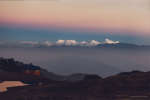 APOD: 2023 June 26 B The Belt of Venus over Mount Everest
APOD: 2023 June 26 B The Belt of Venus over Mount Everest
26.06.2023
You've surely seen it, but you might not have noticed it. During a cloudless twilight, just before sunrise or after sunset, part of the atmosphere above the horizon appears slightly dark and off-color.
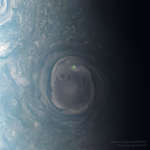 APOD: 2023 June 25 B Lightning on Jupiter
APOD: 2023 June 25 B Lightning on Jupiter
25.06.2023
Does lightning occur only on Earth? No. Spacecraft in our Solar System have detected lightning on other planets, including Mars, Jupiter and Saturn, and lightning is likely on Venus, Uranus, and Neptune. Lightning is a sudden rush of electrically charged particles from one location to another.
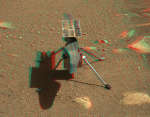 3D Ingenuity
3D Ingenuity
24.06.2023
The multicolor, stereo imaging Mastcam-Z on the Perseverance rover zoomed in to capture this 3D close-up (get out your red/blue glasses) of the Mars Ingenuity helicopter on mission sol 45. That's Earth-date 2021 April 5.
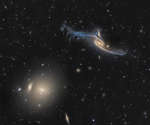 Giant Galaxies in Pavo
Giant Galaxies in Pavo
23.06.2023
Over 500,000 light years across, NGC 6872 (top right) is a truly enormous barred spiral galaxy, at least 5 times the size of our own very large Milky Way. The appearance of this giant galaxy's distorted and stretched out spiral arms suggests the magnificent wings of a giant bird.
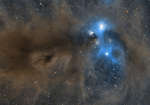 Stars and Dust across Corona Australis
Stars and Dust across Corona Australis
22.06.2023
Cosmic dust clouds cross a rich field of stars in this telescopic vista near the northern boundary of Corona Australis, the Southern Crown. Part of a sprawling molecular cloud complex this star forming region is a mere 500 light-years away.
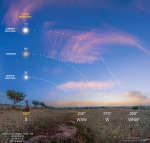 APOD: 2023 June 21 B Three Sun Paths
APOD: 2023 June 21 B Three Sun Paths
21.06.2023
Does the Sun follow the same path every day? No. The Sun's path changes during the year, tracing a longer route during the summer than the winter. Pictured here...
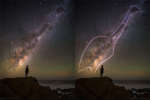 APOD: 2023 June 20 B The Nandu in the Milky Way
APOD: 2023 June 20 B The Nandu in the Milky Way
20.06.2023
Have you seen the bird in the Milky Way? Beyond the man in the Moon, the night sky is filled with stories, and cultures throughout history have projected some of their most enduring legends onto the stars and dust above. Generations of people see these celestial icons, hear their associated stories, and pass them down.
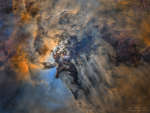 APOD: 2023 June 19 B The Busy Center of the Lagoon Nebula
APOD: 2023 June 19 B The Busy Center of the Lagoon Nebula
19.06.2023
The center of the Lagoon Nebula is a whirlwind of spectacular star formation. Visible near the image center, at least two long funnel-shaped clouds, each roughly half a light-year long, have been formed by extreme stellar winds and intense energetic starlight. A tremendously bright nearby star, Herschel 36, lights the area.
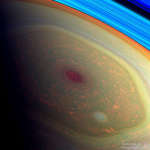 APOD: 2023 June 18 B Saturns Northern Hexagon
APOD: 2023 June 18 B Saturns Northern Hexagon
18.06.2023
Why would clouds form a hexagon on Saturn? Nobody is sure. Originally discovered during the Voyager flybys of Saturn in the 1980s, nobody has ever seen anything like it anywhere else in the Solar System.
 Planet Earth at Night II
Planet Earth at Night II
17.06.2023
Recorded during 2017, timelapse sequences from the International Space Station are compiled in this serene video of planet Earth at Night. Fans of low Earth orbit can start by enjoying the view as green and red aurora borealis slather up the sky.
|
January February March April May June |
|||||||||||||||||||||||||||||||||||||||||||||||||